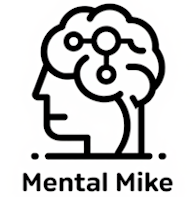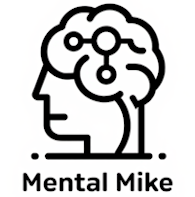Abstinence is often hailed as the gold standard in addiction recovery. And for many, the first day without substances becomes a sacred milestone - a line drawn between chaos and hope, between destruction and possibility. But anyone who’s worked in the trenches of recovery knows a deeper truth: abstinence is not healing. It’s not wholeness. And it’s not enough. It’s a beginning.
In the Unified Flux Model (UFM), we accept abstinence; we honor it. But we also understand that long-term recovery isn’t built on sheer willpower or white-knuckled sobriety. It’s built on energetic realignment - a recalibration of the body, brain, and spirit into coherence. Without that shift, many who “stay clean” still live in emotional turmoil, spiritual detachment, and nervous system dysregulation.
This article explores why abstinence alone often fails to restore vitality, and why energy alignment may be the missing link between surviving addiction and truly recovering.
The Problem with Abstinence-Only Models
Let’s be honest: Abstinence stops the symptom, not the cycle. When someone stops using drugs or alcohol, they remove a harmful coping mechanism, but the core drivers of addiction remain:
In traditional recovery models, abstinence is often mistaken for transformation. But without somatic integration, cognitive reframing, and energetic healing, people can remain in a state of internal chaos even if they never pick up again.
This shows up as:
In neuroscience, this is explained by incomplete recalibration of the brain’s salience and reward network systems deeply impacted by trauma and substance use (Koob & Volkow, 2016). In UFM, we also see this as an energetic mismatch: the substance is gone, but the field is still fractured.
What Is Energy Alignment?
In the Unified Flux Model, energy alignment refers to the harmonization of mental, emotional, physical, and spiritual energies so they can flow without resistance. It’s not a mystical abstraction, it’s a somatically grounded, neurologically supported state where:
Energy alignment is observable. People who are aligned feel different to themselves and to others. They don’t just look sober. They look alive.
Why Misalignment Persists After Sobriety
When people stop using substances, their biofield - an electromagnetic field generated by the body’s neural, cardiac, and muscular activity - doesn’t automatically reset. Years of substance abuse, trauma, and emotional suppression have built energetic patterns that remain encoded in the nervous system and cellular memory (McCraty et al., 2009; van der Kolk, 2014).
This is why relapse is so common even after significant abstinence. The body continues to carry the frequency of chaos or collapse. Triggers still activate the same energetic responses. Without recalibration, abstinence becomes a holding pattern, often a painful one.
Abstinence Without Alignment: Real Stories
At our UFM pilot program, we saw clients who had been “clean” for years, but whose energy told a different story. One man, six years sober, described himself as “Tired all the time. Numb to joy. Scared of emotions.” Another woman said, “I haven’t used it in 18 months, but I still feel like I’m just waiting to fall apart.”
Both of them had done the work - meetings, sponsors, CBT. But they hadn’t yet addressed energetic trauma residues. Once they began daily grounding, conscious breathwork, trauma-informed meditation, and body-based forgiveness rituals, things changed. Common feedback was:
This is what we mean by recovery through energy alignment.
Scientific Support for Energetic Realignment
The nervous system’s regulation is directly influenced by:
All of these are energetic processes. They are not treated through abstinence alone. They require deliberate, embodied practices that teach the system to reorganize and stabilize. This is what UFM provides: a systematic path to energy restoration, supported by modern science, trauma theory, and quantum-informed insight.
Energy Alignment in Practice
The UFM 26-week program incorporates practices to support energy alignment, including:
Each practice is small. But together, they do what abstinence alone cannot: restore the field.
What Does Recovery Feel Like When You’re Aligned?
Alignment is not perfection. But it feels like:
This is a recovery that can last. Because it’s not held together by control, it’s sustained by coherence.
Final Words
Abstinence matters. But it’s not the finish line. It’s the gate. If you’re sober but still suffering, you haven’t failed - you’ve plateaued. And that’s not your fault. The system never taught you how to realign.
But now, there’s another path. A path that doesn’t ask you to choose between science and spirit, between trauma healing and spiritual growth. A path that invites you not only to survive—but to return to resonance.
Energy alignment isn’t just a theory. It’s the missing medicine. And it’s available to you now. Here.
In the Unified Flux Model (UFM), we accept abstinence; we honor it. But we also understand that long-term recovery isn’t built on sheer willpower or white-knuckled sobriety. It’s built on energetic realignment - a recalibration of the body, brain, and spirit into coherence. Without that shift, many who “stay clean” still live in emotional turmoil, spiritual detachment, and nervous system dysregulation.
This article explores why abstinence alone often fails to restore vitality, and why energy alignment may be the missing link between surviving addiction and truly recovering.
The Problem with Abstinence-Only Models
Let’s be honest: Abstinence stops the symptom, not the cycle. When someone stops using drugs or alcohol, they remove a harmful coping mechanism, but the core drivers of addiction remain:
- Unresolved trauma
- Nervous system dysregulation
- Fragmented self-identity
- Chronic shame or inner conflict
- Emotional and relational disconnection
In traditional recovery models, abstinence is often mistaken for transformation. But without somatic integration, cognitive reframing, and energetic healing, people can remain in a state of internal chaos even if they never pick up again.
This shows up as:
- Emotional reactivity
- Dissociation
- Anxiety, depression, or flat affect
- Chronic fatigue or somatic symptoms
- Difficulty maintaining relationships
- Cravings that return in cyclical patterns
In neuroscience, this is explained by incomplete recalibration of the brain’s salience and reward network systems deeply impacted by trauma and substance use (Koob & Volkow, 2016). In UFM, we also see this as an energetic mismatch: the substance is gone, but the field is still fractured.
What Is Energy Alignment?
In the Unified Flux Model, energy alignment refers to the harmonization of mental, emotional, physical, and spiritual energies so they can flow without resistance. It’s not a mystical abstraction, it’s a somatically grounded, neurologically supported state where:
- The nervous system is regulated
- Breath, posture, and movement flow without chronic tension
- Emotions are metabolized rather than repressed
- The self feels centered and integrated
- One’s purpose, behavior, and internal state are in resonance
Energy alignment is observable. People who are aligned feel different to themselves and to others. They don’t just look sober. They look alive.
Why Misalignment Persists After Sobriety
When people stop using substances, their biofield - an electromagnetic field generated by the body’s neural, cardiac, and muscular activity - doesn’t automatically reset. Years of substance abuse, trauma, and emotional suppression have built energetic patterns that remain encoded in the nervous system and cellular memory (McCraty et al., 2009; van der Kolk, 2014).
This is why relapse is so common even after significant abstinence. The body continues to carry the frequency of chaos or collapse. Triggers still activate the same energetic responses. Without recalibration, abstinence becomes a holding pattern, often a painful one.
Abstinence Without Alignment: Real Stories
At our UFM pilot program, we saw clients who had been “clean” for years, but whose energy told a different story. One man, six years sober, described himself as “Tired all the time. Numb to joy. Scared of emotions.” Another woman said, “I haven’t used it in 18 months, but I still feel like I’m just waiting to fall apart.”
Both of them had done the work - meetings, sponsors, CBT. But they hadn’t yet addressed energetic trauma residues. Once they began daily grounding, conscious breathwork, trauma-informed meditation, and body-based forgiveness rituals, things changed. Common feedback was:
- “I feel my own energy now, and it’s not panic.”
- “There’s space inside me where the compulsion used to be.”
- “I’m not just sober. I’m becoming whole.”
This is what we mean by recovery through energy alignment.
Scientific Support for Energetic Realignment
The nervous system’s regulation is directly influenced by:
- Breath rate and HRV (Porges, 2011)
- Coherence between heart, brain, and gut (McCraty et al., 2009)
- Somatic memory and neuroplasticity (Levine, 2010; van der Kolk, 2014)
- Electromagnetic resonance and affective attunement in relationships (Schore, 2019)
All of these are energetic processes. They are not treated through abstinence alone. They require deliberate, embodied practices that teach the system to reorganize and stabilize. This is what UFM provides: a systematic path to energy restoration, supported by modern science, trauma theory, and quantum-informed insight.
Energy Alignment in Practice
The UFM 26-week program incorporates practices to support energy alignment, including:
- Energetic Inventory Mapping: Identifying where your body holds chaos, shame, or numbness
- Breath as Bioelectric Reset: Using vagal activation breathwork to stabilize neural flow
- Somatic Emotional Clearing: Releasing trauma imprints through movement and sound
- Meditation and Visualization: Reprogramming energetic pathways
- Ritual Grounding: Daily earth-based practices to re-anchor scattered energy
- Relational Coherence Work: Rebuilding attunement in safe social connections
Each practice is small. But together, they do what abstinence alone cannot: restore the field.
What Does Recovery Feel Like When You’re Aligned?
Alignment is not perfection. But it feels like:
- Breathing fully
- Sleeping deeply
- Reacting less, noticing more
- Feeling safe in your own skin
- Laughing again - and for no reason
- Trusting that even bad days won’t destroy you
- Loving without self-abandonment
This is a recovery that can last. Because it’s not held together by control, it’s sustained by coherence.
Final Words
Abstinence matters. But it’s not the finish line. It’s the gate. If you’re sober but still suffering, you haven’t failed - you’ve plateaued. And that’s not your fault. The system never taught you how to realign.
But now, there’s another path. A path that doesn’t ask you to choose between science and spirit, between trauma healing and spiritual growth. A path that invites you not only to survive—but to return to resonance.
Energy alignment isn’t just a theory. It’s the missing medicine. And it’s available to you now. Here.
References
Koob, G. F., & Volkow, N. D. (2016). Neurobiology of addiction: A neurocircuitry analysis. The Lancet Psychiatry, 3(8), 760–773. https://doi.org/10.1016/S2215-0366(16)00104-8
Levine, P. A. (2010). In an unspoken voice: How the body releases trauma and restores goodness. North Atlantic Books.
McCraty, R., Atkinson, M., Tomasino, D., & Bradley, R. T. (2009). The coherent heart: Heart-brain interactions, psychophysiological coherence, and the emergence of system-wide order. Integral Review, 5(2), 10–115.
Porges, S. W. (2011). The polyvagal theory: Neurophysiological foundations of emotions, attachment, communication, and self-regulation. W. W. Norton & Company.
Schore, A. N. (2019). Right brain psychotherapy. W. W. Norton & Company.
van der Kolk, B. A. (2014). The body keeps the score: Brain, mind, and body in the healing of trauma. Viking.
Levine, P. A. (2010). In an unspoken voice: How the body releases trauma and restores goodness. North Atlantic Books.
McCraty, R., Atkinson, M., Tomasino, D., & Bradley, R. T. (2009). The coherent heart: Heart-brain interactions, psychophysiological coherence, and the emergence of system-wide order. Integral Review, 5(2), 10–115.
Porges, S. W. (2011). The polyvagal theory: Neurophysiological foundations of emotions, attachment, communication, and self-regulation. W. W. Norton & Company.
Schore, A. N. (2019). Right brain psychotherapy. W. W. Norton & Company.
van der Kolk, B. A. (2014). The body keeps the score: Brain, mind, and body in the healing of trauma. Viking.



